Little Monsta, Starlet, Showdown, Candy, Stealth, Jewel
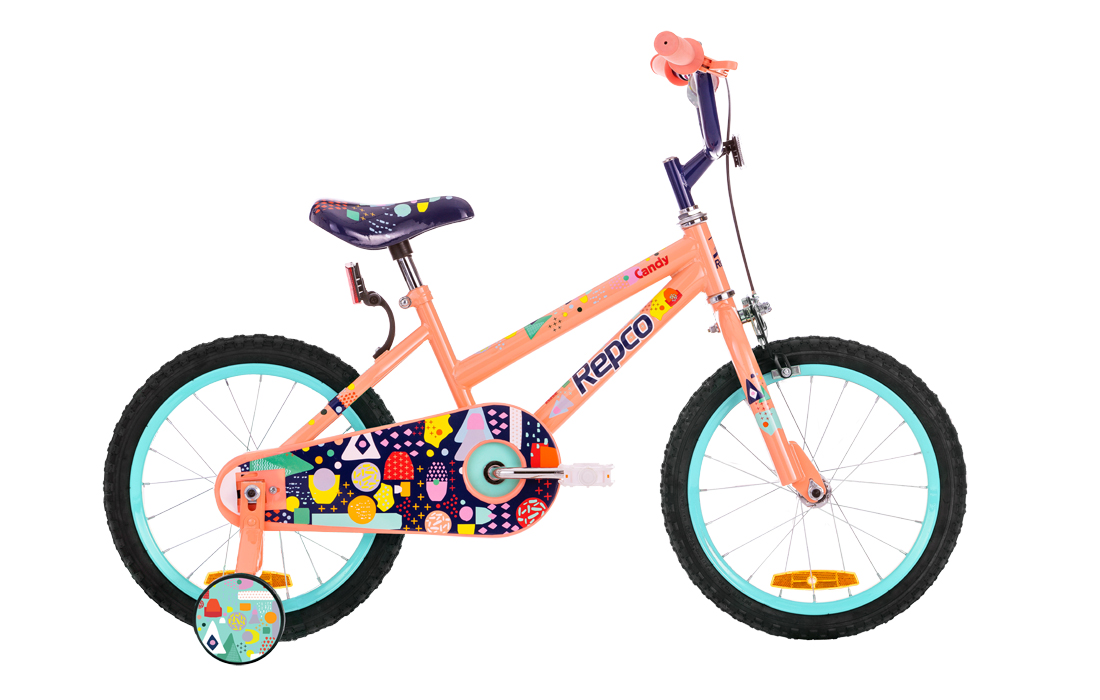
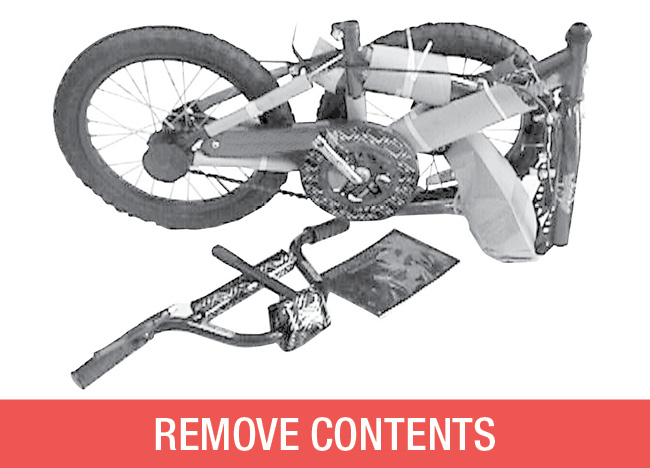
Open the carton from the top, and remove the bicycle. Remove the straps holding the front wheel, handlebar assembly, and the following components: Seat post with saddle, pedals and any other components. Remove the protective paper wrapping from the bicycle.
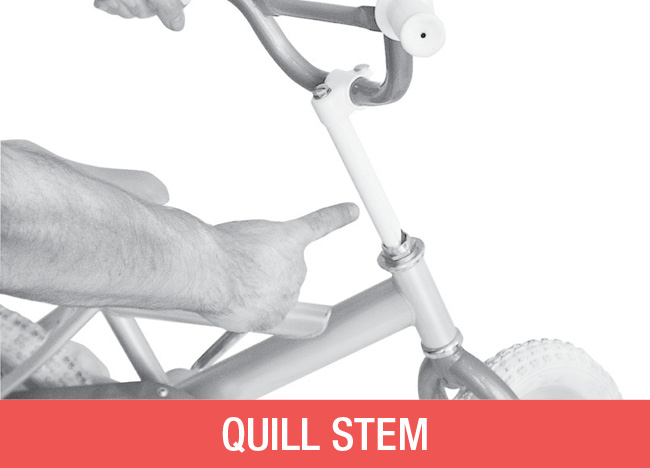
Remove the protective cap from the handlebar stem and loosen the centre bolt in the head stem using a 6mm Allen Key. Insert the handlbar and headstem assembly into the head tube of the bike. Re-tighten the headstem ensuring the minimum insert mark is fully covered, with both handlebar and forks facing the front. To adjust handlebars to correct angle loosen clamp bolts using 6mm Allen Key. Ensure clamp bolts are firmly re-tightened.

Insert the seat post with saddle into the seat tube of the bicycle ensuring the minimum insert mark on the seat post is fully covered inside the frame. Tighten the seat tube clamping bolt using a 13mm spanner.
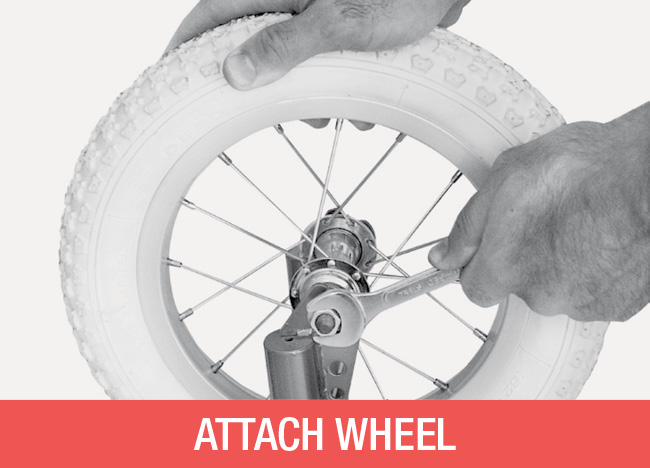
Turn the bicycle upside down and rest it on the seat and the handlebars. Insert the front wheel into the forks. Where supplied, ensure that the small tab on the washer under the wheel nut is located in the slot in the forks. This tab will ensure that the wheel will not fall out should the nuts become loose. Tighten the wheel nuts using a 15mm spanner.
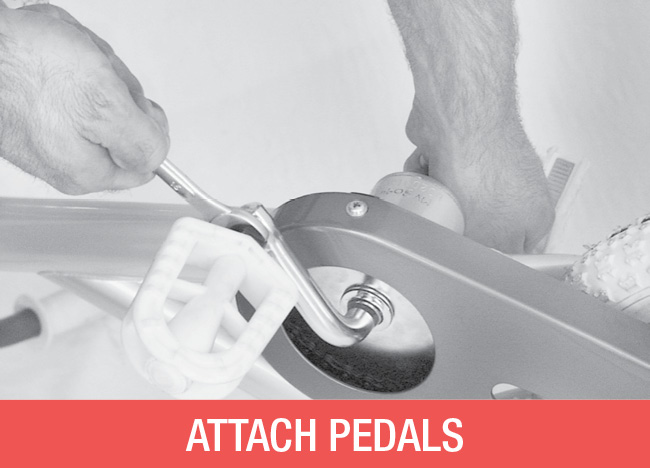
Attach the pedals carefully, engaging the thread initially by hand. The right hand pedal is marked with an “R” and attaches to the right crank in a clockwise direction (the right side is the one with the chainwheel). The left pedal, is marked with an “L” and attaches to the left crank in an anti-clockwise direction. Tighten pedals very firmly using a 15mm spanner. Note: damage will occur if pedals are not attached in the correct direction and firmly tightened.
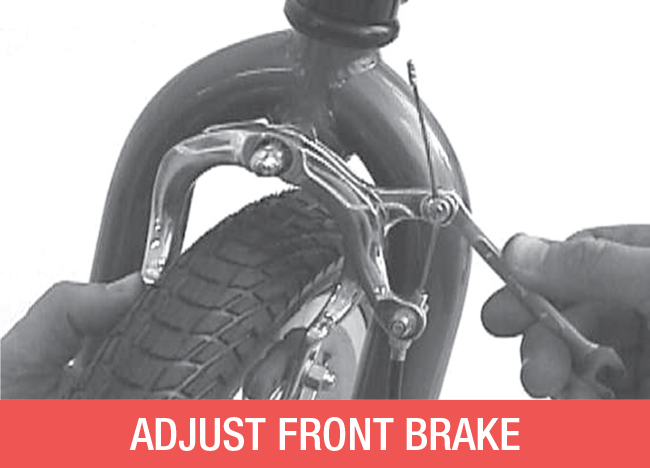
Adjust the front brake by loosening the brake cable at the anchor bolt using a 10mm spanner. Squeeze the caliper by hand to ensure the pads sit squarely and evenly on the rim. Pull the cable tight and re-tighten the anchor bolt so that the brake pads are a maximum of 2mm from the rim on each side. Fine tune by turning the cable barrel adjuster. Brake shoe nuts and cable anchor must be firmly tightened. Test before riding.
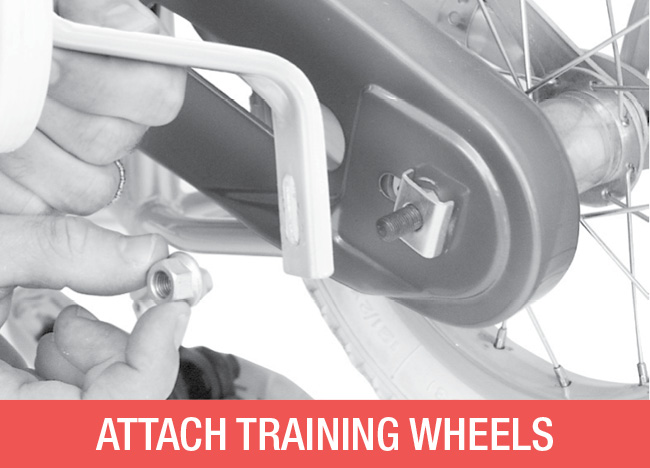
If training wheels are supplied, remove thick 15mm rear axle nuts and fit the metal locating bracket onto the rear axle over the axle nuts. The tabs on the brackets fit into the frame slots. Place training wheel arms over the locating brackets. Re-fit and firmly tighten the rear axle nuts. You are now ready to turn the bicycle the right way up.

Important! Do not ride until brakes are operating correctly. Ensure cable end protectors are fitted, crimping with a pair of pliers. Ensure all nuts, bolts and fittings have been correctly tightened and tyres inflated to pressure written on tyre sidewalls. Ensure seat post and head stem are inserted past the minimum marks. Proper maintenance of your bicycle ensures you will enjoy many years of happy riding. We recommend that you book your bike into a bike shop for regular services at no longer than six month intervals to ensure maximum performance.

